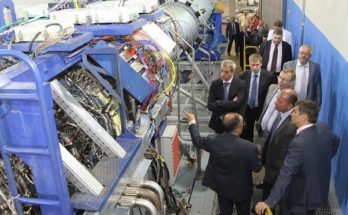By Stuart Slade, Gas Turbine Systems Analyst, Forecast International.

The above graph refers only to steam turbines used in conjunction with gas turbines in cogeneration applications. It is entirely possible that we missed some likely cogen applications, as inevitably happens. Further, there are many pure steam installations that will continue to operate independently with other heat sources.
There is a curious anomaly developing in the power generation industry: While demand for electricity is rising steadily and shows no sign of leveling off, let alone declining, the number and aggregate value of large power generation gas turbine sales are actually showing a slow but steady decline. A detailed and nuanced appraisal points to a complex picture underlying this situation.
A major technical factor bearing upon future sales is the increasing power output of gas turbines. Where once a given power generation facility may have had four or more gas turbines rated at or around 100 MW, now it has one or two turbines of much greater output. Economically, this is a good thing. The cost per MW output is not linear; it declines as the total output from the plant increases. At the same time, efficiency in terms of fuel consumption increases as output climbs. Thus, while power generation capacity is increasing, the number of units required to produce that power is falling. This will have a significant impact on both the number of gas turbines produced and the total investment required to procure and run them.
Another factor of consequence is the growing presence of cogeneration plants where the exhaust from the gas turbines is used to generate steam. This is then used to power one or more steam turbines. In power generation terms, the gas turbine is not replacing a steam turbine but rather the boiler that produces steam to power the steam turbine. The gains in efficiency here are remarkable. A simple-cycle, gas turbine-only power generation facility may have an efficiency of 35 to 37 percent, but using a combined-cycle cogeneration plant to recover the heat energy from the gas turbine exhaust can achieve efficiencies of 70 to 80 percent – or even higher. Thus, a cogeneration plant may produce more power more efficiently than a simple-cycle facility but requires fewer gas turbines to do so. Again, an increase in power supply is achieved with a decline in the number of gas turbines sold. This is why the leading gas turbine producers are keen to combine traditional steam turbine manufacturing capacity with their gas turbine capability. It should be noted, however, that large cogeneration applications will, in turn, require larger installation facilities as well as more complex control and switching gear. Thus, some of the cost benefits gained by the economies of scale for the turbines will be balanced out.
If we were to curve the projected output in megawatts, we would see dramatic growth!
We’re working on it.
Please feel free to use this content with Forecast International and analyst attributions, along with a link to the article. Contact Ray Peterson at +1 (203) 426-0800 or via email at ray.peterson@forecast1.com for additional analysis.
Let Forecast International help you track these markets with its
 With over 70 engine program reports – from 1,200 kW to over 300 MW, Industrial & Marine Turbine Forecast provides the tools required to make informed strategic decisions in an expanding marketplace. This service features five Market Segment Analyses covering Microturbines, Mechanical Drive Engines, Electrical Power Generation, Marine Power, and Steam Turbines for Combined-Cycle Installation. Included among the eight appendices are a breakout of consolidated production statistics and a directory of Industrial & Marine manufacturers and packagers.
With over 70 engine program reports – from 1,200 kW to over 300 MW, Industrial & Marine Turbine Forecast provides the tools required to make informed strategic decisions in an expanding marketplace. This service features five Market Segment Analyses covering Microturbines, Mechanical Drive Engines, Electrical Power Generation, Marine Power, and Steam Turbines for Combined-Cycle Installation. Included among the eight appendices are a breakout of consolidated production statistics and a directory of Industrial & Marine manufacturers and packagers.
For 50 years, Forecast International intelligence reports have been the aerospace and defense industry standard for accurate research, analysis, and projections. Our experienced analysts compile, evaluate, and present accurate data for decision makers. FI's market research reports offer concise analysis of individual programs and identify market opportunities. Each report includes a program overview, detailed statistics, recent developments and a competitive analysis, culminating in production forecasts spanning 10 or 15 years. Let our market intelligence reports be a key part of reducing uncertainties and mastering your specific market and its growth potential. Find out more at www.forecastinternational.com




